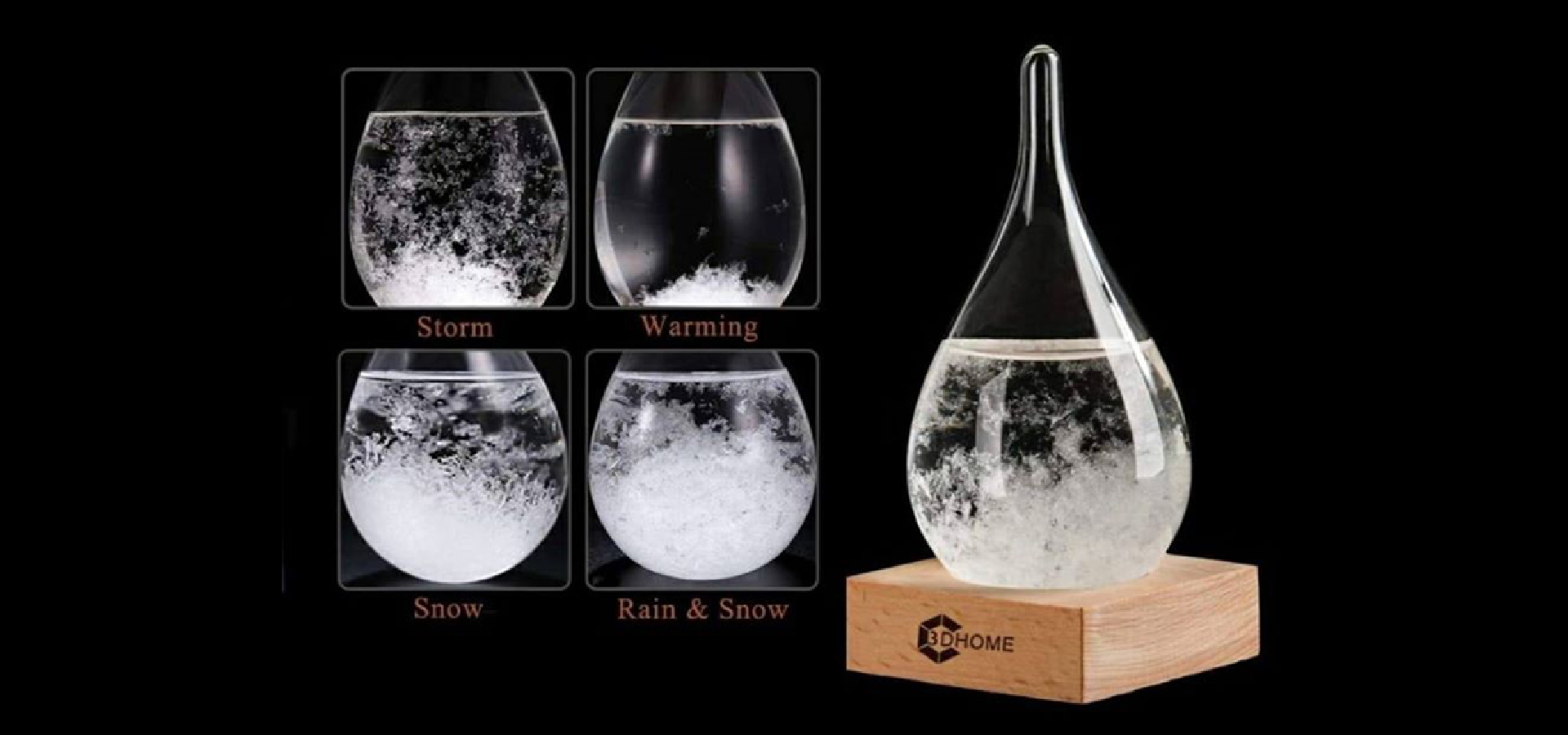
19th century weather forecast in a glass
- March 20, 2020
- 0
𝑾𝒉𝒂𝒕 𝒊𝒔 𝒂 𝒔𝒕𝒐𝒓𝒎 𝒈𝒍𝒂𝒔𝒔?
A storm glass (aka chemical weather glass) is a glass tube containing a solution of ammonium chloride, potassium nitrate, camphor, ethanol and water. A variety of crystal shapes were commonly present in this solution, and it was suggested that their quantity and form could predict the weather.
𝑯𝒐𝒘 𝒅𝒐𝒆𝒔 𝒕𝒉𝒆 𝒄𝒓𝒚𝒔𝒕𝒂𝒍 𝒇𝒐𝒓𝒎 𝒑𝒓𝒆𝒅𝒊𝒄𝒕 𝒕𝒉𝒆 𝒘𝒆𝒂𝒕𝒉𝒆𝒓?
- Clear liquid: clear weather ☀️
- Small dot crystals: humid or foggy🌫
- Star-like crystals on a sunny day: snow🌨
- Crystals at the bottom: frost❄
- Threads near the top: windy🌬
- Cloudy liquid: rain🌧
Noting that the accuracy of these predictions is variable.
𝑾𝒉𝒂𝒕 𝒄𝒂𝒖𝒔𝒆𝒔 𝒕𝒉𝒆 𝒄𝒉𝒂𝒏𝒈𝒆𝒔 𝒊𝒏 𝒕𝒉𝒆 𝒄𝒓𝒚𝒔𝒕𝒂𝒍’𝒔 𝒔𝒉𝒂𝒑𝒆?
Early theories held that the chemical blend inside was sensitive to heat, wind, atmospheric pressure, or even electrical charge.
❌However, knowing that most of the storm glasses were hermetically sealed, the theory of atmospheric pressure affecting the crystal form variation was put aside.
❌Also, the idea that crystals respond to electrical charges in the environment around them seemed implausible, since glass is an insulator and not a conductor of electricity.
✅Modern studies concluded that only temperature variations affected the solubility of the crystals inside the solution, resulting in various forms and quantities. Many experiments showed that a rapid drop in temperature resulted in a compact mass of feather-like crystals deposited at the bottom of the glass, and a slow decrease in temperature showed tiny crystal stars suspended in the solution.











